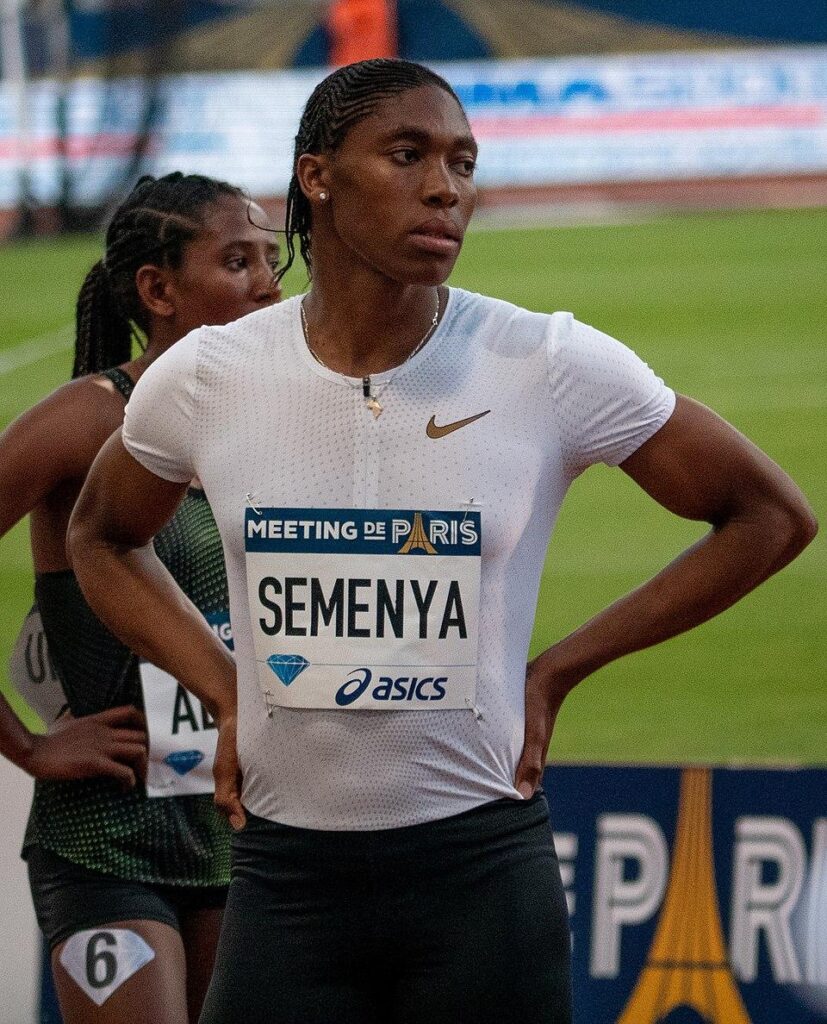For more than a decade and a half, Caster Semenya’s eligibility to compete as a female athlete has sparked intense debate and legal battles that continue to reverberate throughout the world of sports. Since first rising to prominence as a middle-distance runner, Semenya’s career has been shadowed by disputes over testosterone regulations and gender classifications, raising complex questions about fairness, human rights, and the evolving definitions of sex and gender in athletics. As her latest challenges unfold, the controversy surrounding Semenya remains one of the most polarizing and unresolved issues in competitive sports today.
Caster Semenya’s Impact on Gender Verification Policies in Athletics
Since bursting onto the global stage, the South African athlete has become an unintended catalyst for one of the most complex and controversial issues in sports: gender verification policies. Her exceptional performances in middle-distance running prompted governing bodies to scrutinize female eligibility standards more rigorously, igniting fierce debates on biological sex, fairness, and human rights. The evolving regulations, often perceived as invasive and discriminatory, have drawn sharp criticism from athletes, scientists, and activists alike, as they struggle to balance inclusivity with competitive equity.
The ripple effect of these policies goes beyond Semenya’s own career, impacting countless other athletes and forcing organizations like World Athletics to continually revise their frameworks. Key aspects under constant debate include:
- Testosterone thresholds: Defining acceptable hormone levels for female competitors.
- Privacy concerns: The ethics of mandatory medical examinations and public exposure.
- Legal challenges: Ongoing court battles questioning the scientific validity of policies.
| Year | Policy Change | Impact |
|---|---|---|
| 2009 | Introduction of testosterone limit for female eligibility | Semenya challenged policies at CAS |
| 2015 | Relaxed regulations but maintained hormone focus | Mixed reactions from athletes and experts |
| 2019 | New testosterone restrictions for specific events | Heightened controversy and legal disputes |
The Science and Controversy Behind Hyperandrogenism Regulations
Hyperandrogenism regulations in sports, designed to maintain fairness in women’s competitions, hinge on controlling testosterone levels among female athletes. Yet, the science behind these rules is far from settled. Elevated testosterone can offer physical advantages like increased muscle mass and oxygen-carrying capacity, but the biological landscape is complex: some women naturally have high androgen levels without doping. Medical experts argue that using testosterone thresholds as a strict eligibility criterion lacks a definitive causal link to enhanced athletic performance, challenging the assumption that hormone levels alone can dictate fairness.
This controversy has sparked intense debate within sports governance, leading to evolving and often inconsistent policy enforcement. The current framework includes:
- Mandatory testosterone testing for female athletes in certain events
- Limits set by institutions like World Athletics (formerly IAAF) for eligible hormone ranges
- Options for athletes to undergo medical treatment to reduce testosterone levels
However, critics highlight the ethical implications, arguing that these measures can stigmatize athletes and infringe on their rights. The table below illustrates how testosterone thresholds differ across sports governing bodies:
| Governing Body | Testosterone Limit (nmol/L) | Applicable Athletes |
|---|---|---|
| World Athletics | 5.0 | Female middle-distance runners |
| International Olympic Committee | 10.0 | All female athletes |
| International Swimming Federation | Not implemented | N/A |
Legal Battles Shaping the Future of Sex Eligibility in Sports
Over the past sixteen years, Caster Semenya’s case has become a landmark legal battle at the intersection of gender, biology, and competitive fairness. Challenging traditional definitions of sex eligibility, Semenya’s ongoing fight has drawn intense scrutiny from sporting authorities, human rights organizations, and legal entities worldwide. The core of the dispute revolves around hyperandrogenism regulations, which limit testosterone levels for female athletes – rules that critics argue disproportionately target Semenya and others with naturally high hormone levels. Courts and sports tribunals have issued conflicting decisions, reflecting the complexity of applying scientific standards within the strictures of sports governance.
Key legal milestones in this saga reveal a pattern of contested regulations shaping future policies on sex eligibility, including:
- 2015: IAAF introduces testosterone limits for female athletes.
- 2018: Court of Arbitration for Sport upholds regulations, citing fairness concerns.
- 2019: Semenya appeals to the Swiss Federal Supreme Court for clarity.
- 2024: Ongoing debates around inclusivity versus competitive equity.
| Year | Legal Action | Outcome |
|---|---|---|
| 2015 | Testosterone Rule Enacted | Implemented by IAAF |
| 2018 | CAS Ruling | Regulations Upheld |
| 2019 | Swiss Court Appeal | Case Remanded |
| 2024 | Policy Revisions Proposed | Pending Debate |
Recommendations for Fairness and Inclusion in Competitive Athletics
To navigate the complexities surrounding fairness and inclusion in competitive athletics, sporting bodies must adopt transparent, evidence-based policies that respect human rights and individual dignity. These frameworks should be developed in consultation with athletes, medical experts, and rights organizations to ensure that policies do not unfairly discriminate based on sex, gender identity, or biological variations. Emphasizing clear communication and consistent enforcement will help restore trust among athletes and fans alike, fostering an environment where competition is equitable and integrity is preserved.
Additionally, embracing more inclusive categories or weight classes could offer a progressive pathway to balance competition and fairness. Sporting institutions might consider flexible eligibility criteria that recognize the natural diversity of athlete physiology without stigmatization. Below is a simple overview of potential measures to promote inclusion while maintaining competitive integrity:
| Measure | Objective | Potential Impact |
|---|---|---|
| Biological Marker Assessments | Scientific clarity on eligibility | Reduce biased rulings |
| Inclusive Event Categories | Broaden participation | Encourage diversity |
| Athlete Advocacy Panels | Ensure athlete voices are heard | Improve policy legitimacy |
To Wrap It Up
Caster Semenya’s protracted battle over sex eligibility has not only highlighted the complexities of defining fairness in sports but also exposed the enduring challenges faced by athletes whose identities fall outside conventional categories. As the debate continues to unfold, it remains a powerful testament to the need for inclusive policies that balance equity, science, and human rights. While no definitive resolution has yet been reached after 16 years, Semenya’s case serves as a pivotal moment in the evolving conversation about gender, competition, and the future of athletics worldwide.





